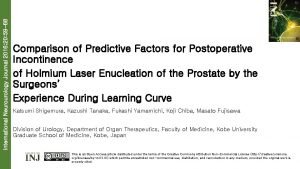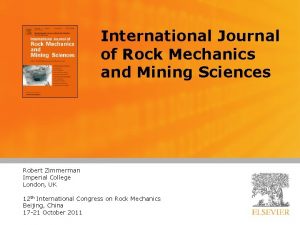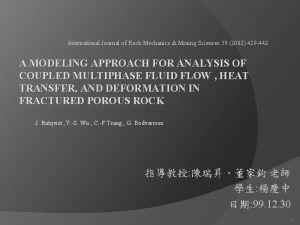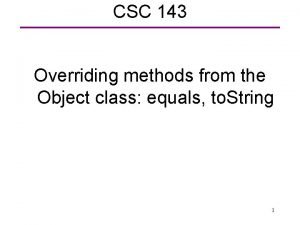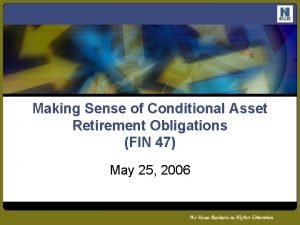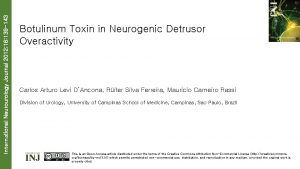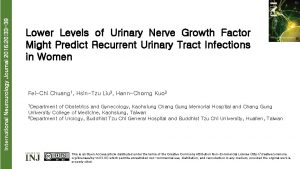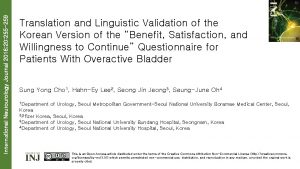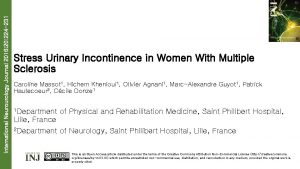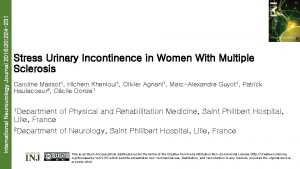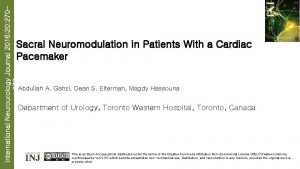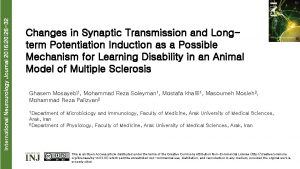International Neurourology Journal 2016 20 143 150 Holmium










- Slides: 10

International Neurourology Journal 2016; 20: 143 -150 Holmium Laser Enucleation of the Prostate is Safe for Patients Above 80 Years: A Prospective Study Songzhe Piao 1, 2, Min Soo Choo 3, Myong Kim 1, Ho Joon Jeon 1, Seung-June Oh 1 1 Department of Urology, Seoul National University Hospital, Seoul, Korea 2 Department of Urology, Yanbian University Hospital, Yanji, China 3 Department of Urology, Dongtan Sacred Heart Hospital, Hwaseong, Korea This is an Open Access article distributed under the terms of the Creative Commons Attribution Non-Commercial License (http: //creativecommons. org/licenses/by-nc/3. 0/) which permits unrestricted non-commercial use, distribution, and reproduction in any medium, provided the original work is properly cited.

International Neurourology Journal 2016; 20: 143 -150 INTRODUCTION • To evaluate the effect of age on the efficacy and safety of holmium laser enucleation of the prostate (Ho. LEP) for the treatment of symptomatic benign prostatic hyperplasia (BPH). MATERIALS AND METHODS • A total of 579 patients underwent Ho. LEP procedure performed by a single surgeon (SJO) between December 2009 and May 2013. • The perioperative and functional outcomes of patients in the age groups of 50– 59 (group A, n=44), 60– 69 (group B, n=253), 70– 79 (group C, n=244), and ≥ 80 years (group D, n=38) were compared. • The Clavien-Dindo system was used to evaluate clinical outcomes. The International Prostate Symptom Score (IPSS), maximum urinary flow rate (Qmax), postvoid residual (PVR) urine volume, and urinary continence were used to assess functional outcomes.

International Neurourology Journal 2016; 20: 143 -150 RESULTS • The patients ≥ 80 years had significantly higher presence of hypertension (P=0. 007), total prostate volumes (P=0. 024), transitional zone volume (P=0. 002), American Society of Anesthesiologists scores (P=0. 006), urinary retention (P=0. 032), and anticoagulation use (P=0. 008) at preoperative period. • Moreover, the mean values of operation time, enucleation time, morcellation time, and enucleation weight were higher in group D compared with other group patients (P=0. 002, P=0. 010, P<0. 01, and P=0. 009, respectively). Patients aged ≥ 80 years had a longer hospital stay time (2. 9± 1. 8 days) than other groups (group A, 2. 3± 0. 7 days; group B, 2. 3± 0. 7 days vs. group C, 2. 4± 0. 7 days; P=0. 001). All groups were similar in regard to the incidence of complications (Clavien-Dindo grade) post operatively (P>0. 05). • All the patients in the present study showed improvement in functional outcomes after Ho. LEP. By the sixth month, there were no significant differences in IPSS, quality of life, Qmax, and PVR among the groups (P>0. 05).

International Neurourology Journal 2016; 20: 143 -150 CONCLUSIONS • IADL limitations and presence of BPH were associated with UI in older men after controlling for BMI, education, comorbidities, and walking speed. • Thus, UI should be assessed in older Korean men with IADL decline and BPH. Gender-sensitive interventions to attenuate IADL limitations and manage BPH should be developed and applied to improve UI in older men.

International Neurourology Journal 2016; 20: 143 -150 Table 1. Baseline characteristics

International Neurourology Journal 2016; 20: 143 -150 Table 2. Perioperative outcomes

International Neurourology Journal 2016; 20: 143 -150 Table 3. Intraoperative and postoperative complications

International Neurourology Journal 2016; 20: 143 -150 Table 4. Lower tract functional outcomes

International Neurourology Journal 2016; 20: 143 -150

International Neurourology Journal 2016; 20: 143 -150 Fig. 1. Age-specific changes of subjects International Prostate Symptom Score (IPSS; A) and quality of life (Qo. L; B), and in objective rate of urinary flow (Qmax; C) and postvoid residual (PVR; D) volume from baseline to various follow-up assessments. Group A, age groups of 50– 59 years; group B, age groups of 60– 69 years; group C, age groups of 70– 79 years; group D, age groups of ≥ 80 years.
 International neurourology journal
International neurourology journal Le journal le monde en 2016.
Le journal le monde en 2016. Robert zimmerman imperial
Robert zimmerman imperial International journal of rock mechanics and mining sciences
International journal of rock mechanics and mining sciences International journal of science and mathematics education
International journal of science and mathematics education Air canada side slip
Air canada side slip Csc 143
Csc 143 Szkoła podstawowa nr 143 im. stefana starzyńskiego
Szkoła podstawowa nr 143 im. stefana starzyńskiego Accretion expense
Accretion expense 11-1 areas of parallelograms and triangles
11-1 areas of parallelograms and triangles 143.ent
143.ent
